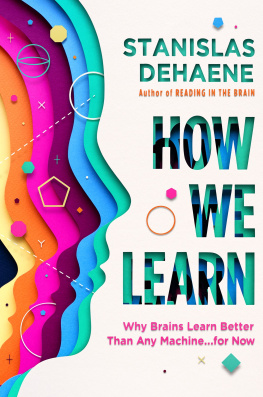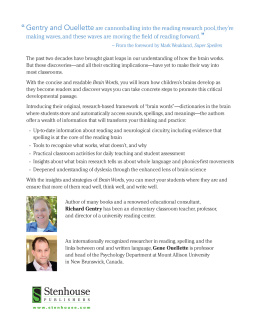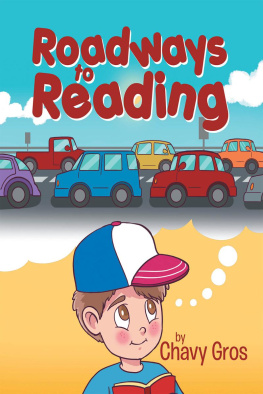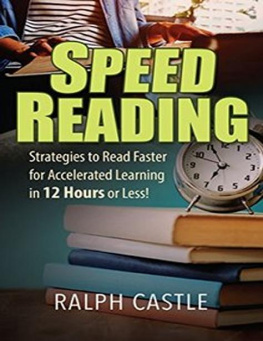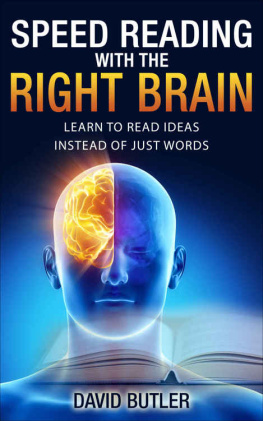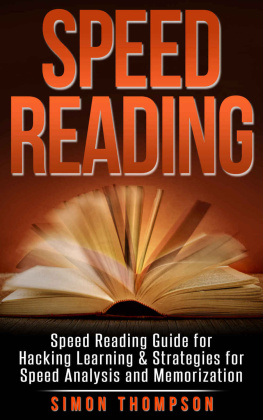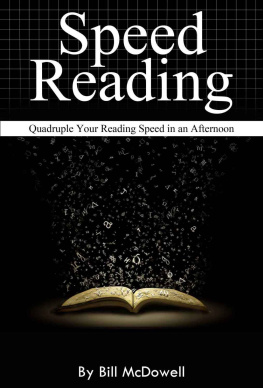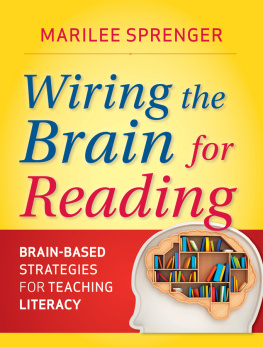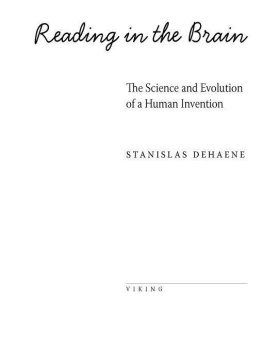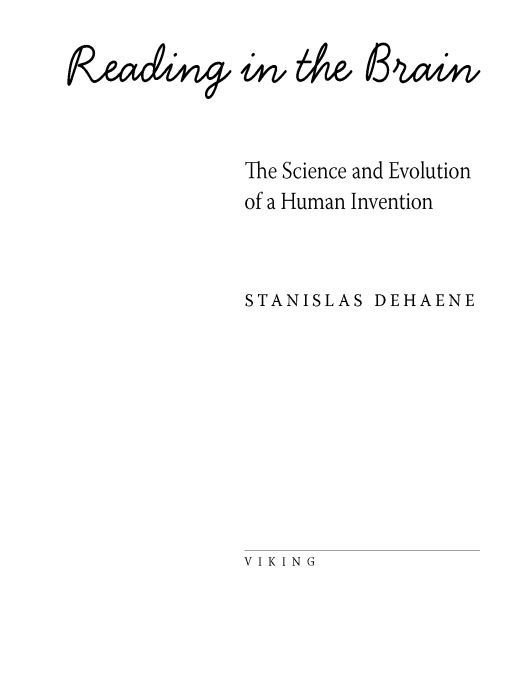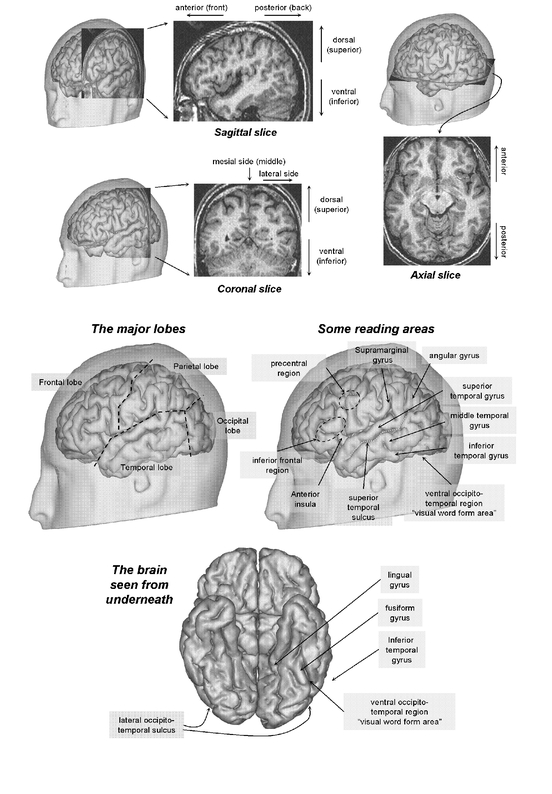Table of Contents
For Ghislaine
Getting oriented in the brain
INTRODUCTION
The New Science of Reading
Withdrawn into the peace of this desert,
along with some books, few but wise,
I live in conversation with the deceased,
and listen to the dead with my eyes
FRANCISCO DE QUEVEDO
At this very moment, your brain is accomplishing an amazing featreading. Your eyes scan the page in short spasmodic movements. Four or five times per second, your gaze stops just long enough to recognize one or two words. You are, of course, unaware of this jerky intake of information. Only the sounds and meanings of the words reach your conscious mind. But how can a few black marks on white paper projected onto your retina evoke an entire universe, as Vladimir Nabokov does in the opening lines of
Lolita:
Lolita, light of my life, fire of my loins. My sin, my soul. Lo-lee-ta: the tip of the tongue taking a trip of three steps down the palate to tap, at three, on the teeth. Lo. Lee. Ta.
The readers brain contains a complicated set of mechanisms admirably attuned to reading. For a great many centuries, this talent remained a mystery. Today, the brains black box is cracked open and a true science of reading is coming into being. Advances in psychology and neuroscience over the last twenty years have begun to unravel the principles underlying the brains reading circuits. Modern brain imaging methods now reveal, in just a matter of minutes, the brain areas that activate when we decipher written words. Scientists can track a printed word as it progresses from the retina through a chain of processing stages, each of which is marked by an elementary question: Are these letters? What do they look like? Are they a word? What does it sound like? How is it pronounced? What does it mean?
On this empirical ground, a theory of reading is materializing. It postulates that the brain circuitry inherited from our primate evolution can be co-opted to the task of recognizing printed words. According to this approach, our neuronal networks are literally recycled for reading. The insight into how literacy changes the brain is profoundly transforming our vision of education and learning disabilities. New remediation programs are being conceived that should, in time, cope with the debilitating incapacity to decipher words known as dyslexia.
My purpose in this book is to share my knowledge of recent and little-known advances in the science of reading. In the twenty-first century, the average person still has a better idea of how a car works than of the inner functioning of his own braina curious and shocking state of affairs. Decision makers in our education systems swing back and forth with the changing winds of pedagogical reform, often blatantly ignoring how the brain actually learns to read. Parents, educators, and politicians often recognize that there is a gap between educational programs and the most up-to-date findings in neuroscience. But too frequently their idea of how this field can contribute to advances in education is only grounded in a few color pictures of the brain at work. Unfortunately, the imaging techniques that allow us to visualize brain activity are subtle and occasionally misleading. The new science of reading is so young and fast-moving that it is still relatively unknown outside the scientific community. My goal is to provide a simple introduction to this exciting field, and to increase awareness of the amazing capacities of our reading brains.
From Neurons to Education
Reading acquisition is a major step in child development. Many children initially struggle with reading, and surveys indicate that about one adult in ten fails to master even the rudiments of text comprehension. Years of hard work are needed before the clockwork-like brain machinery that supports reading runs so smoothly that we forget it exists.
Why is reading so difficult to master? What profound alterations in brain circuitry accompany the acquisition of reading? Are some teaching strategies better adapted to the childs brain than others? What scientific reasons, if any, explain why phonicsthe systematic teaching of letter-to-sound correspondencesseems to work better than whole-word teaching? Although much still remains to be discovered, the new science of reading is now providing increasingly precise answers to all these questions. In particular, it underlines why early research on reading erroneously supported the whole-word approachand how recent research on the brains reading networks proves it was wrong.
Understanding what goes into reading also sheds light on its pathologies. In our explorations of the readers mind and brain, you will be introduced to patients who suddenly lost the ability to read following a stroke. I will also analyze the causes of dyslexia, whose cerebral underpinnings are gradually coming to light. It is now clear that the dyslexic brain is subtly different from the brain of a normal reader. Several dyslexia susceptibility genes have been identified. But this is by no means a reason for discouragement or resignation. New intervention therapies are now being defined. Intensive retraining of language and reading circuits has brought about major improvements in childrens brains that can readily be tracked with brain imaging.
Putting Neurons into Culture
Our ability to read brings us face-to-face with the singularity of the human brain. Why is Homo sapiens the only species that actively teaches itself? Why is he unique in his ability to transmit a sophisticated culture? How does the biological world of synapses and neurons relate to the universe of human cultural inventions? Reading, but also writing, mathematics, art, religion, agriculture, and city life have dramatically increased the native capacities of our primate brains. Our species alone rises above its biological condition, creates an artificial cultural environment for itself, and teaches itself new skills like reading. This uniquely human competence is puzzling and calls for a theoretical explanation.
One of the basic techniques in the neurobiologists toolkit consists of putting neurons in cultureletting neurons grow in a petri dish. In this book, I call for a different culture of neuronsa new way of looking at human cultural activities, based on our understanding of how they map onto the brain networks that support them. Neurosciences avowed goal is to describe how the elementary components of the nervous system lead to the behavioral regularities that can be observed in children and adults (including advanced cognitive skills). Reading provides one of the most appropriate test beds for this neurocultural approach. We are increasingly aware of how writing systems as different as Chinese, Hebrew, or English get inscribed in our brain circuits. In the case of reading, we can clearly draw direct links between our native neuronal architecture and our acquired cultural abilitiesbut the hope is that this neuroscience approach will extend to other major domains of human cultural expression.
The Mystery of the Reading Ape
If we are to reconsider the relation between brain and culture, we must address an enigma, which I call the


